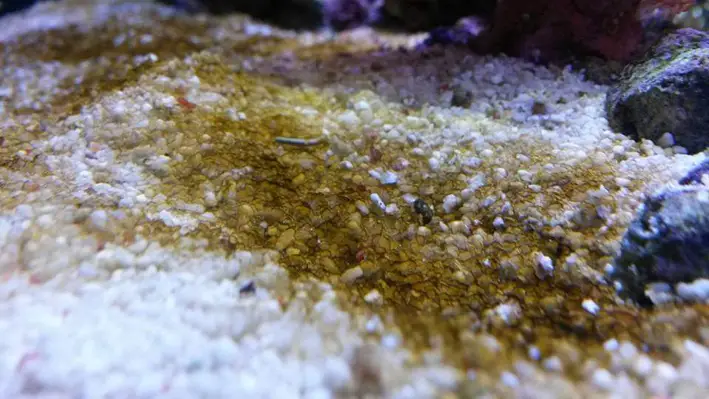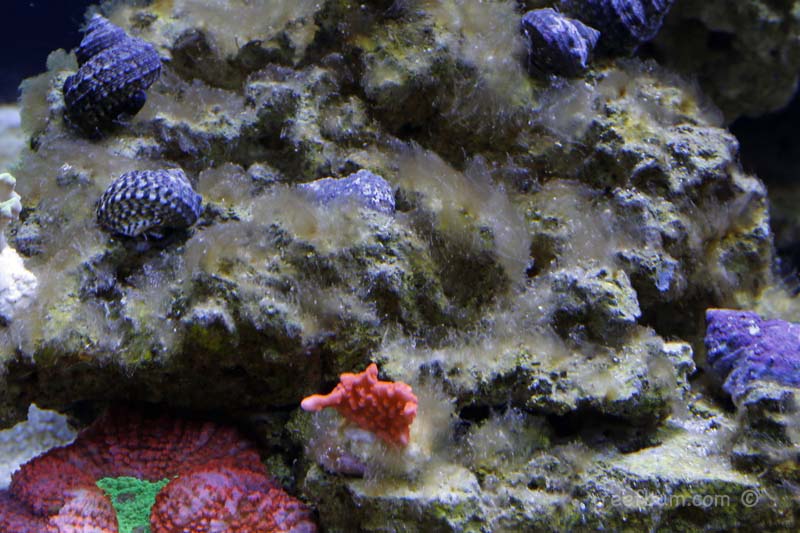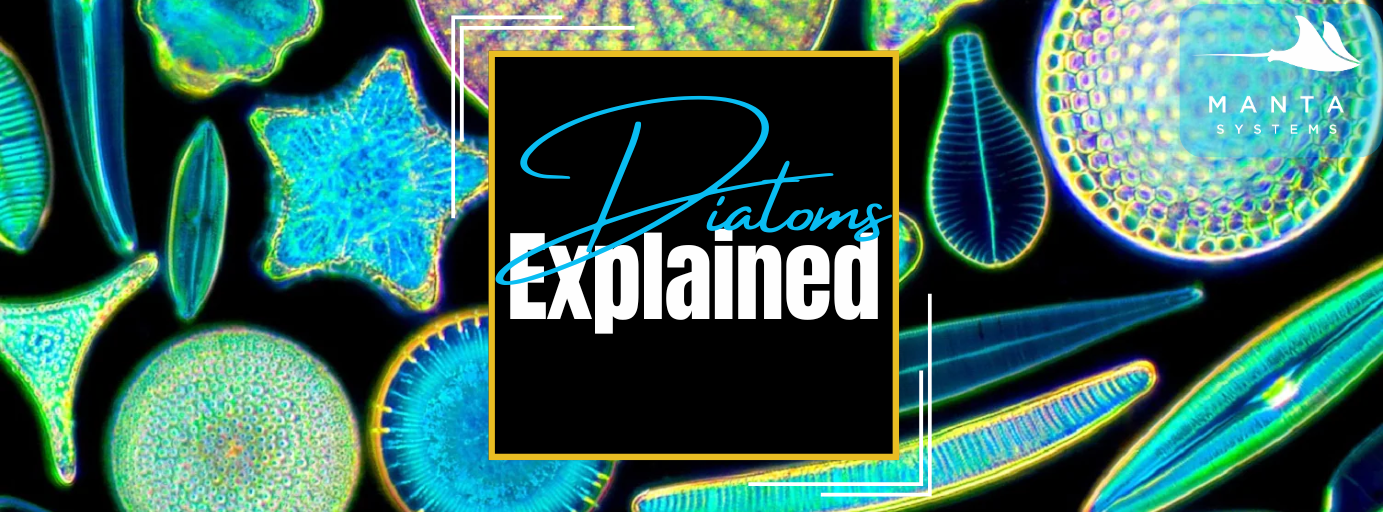
𝐃𝐢𝐚𝐭𝐨𝐦𝐬:
𝐂𝐚𝐮𝐬𝐞𝐬, 𝐒𝐨𝐥𝐮𝐭𝐢𝐨𝐧𝐬, 𝐚𝐧𝐝 𝐏𝐫𝐞𝐯𝐞𝐧𝐭𝐢𝐨𝐧
Introduction:
Every saltwater hobbyist has encountered it—the dreaded brown dust that suddenly covers your sand, rocks, and glass. Welcome to the diatom bloom, a natural but often frustrating phase in aquarium cycling.
Diatoms are a common issue, especially in new tanks, and while they may look unsightly, they are rarely harmful. The key to managing them is understanding why they appear, how to get rid of them, and how to prevent them from coming back.
This guide will walk you through identification, causes, prevention, and solutions to keep your reef tank clear of diatoms.
What Are Diatoms?
Diatoms (Bacillariophyceae) are unicellular algae encased in silica-based cell walls called frustules. They are found in virtually every aquatic environment and play a crucial role in oxygen production and nutrient cycling.
Fun Fact: Diatoms produce up to 20% of the Earth's oxygen! Your brown dust is actually a tiny rainforest in disguise.
Why Do They Appear in Aquariums?
Diatoms are opportunistic and thrive in environments with available silicates, nitrates, and phosphates. In reef tanks, they often appear as part of the cycling process when beneficial bacteria are still establishing.
How to Identify Diatoms
1. Appearance:
Diatoms typically present as a fine, brown, or golden-brown film that coats surfaces in the aquarium, including substrate, live rock, glass, and even coral bases. The coloration can range from light tan to deep brown, depending on the density of the diatom bloom. Unlike other algae types, diatoms don’t form thick, gelatinous mats or tangled strands.
Photo Credit: Artistic Oceans, ReefBum
2. Texture:
Diatoms are primarily known for their powdery, dust-like texture, but they can also take on other forms depending on conditions like nutrient availability, flow, and competition.
-
Powdery & Dust-Like (Most Common Form)
- Appearance: A thin, brown, velvety film that coats sand, rocks, and glass.
- Texture: Soft, easily disturbed, and often breaks apart when touched.
- Removal: Wipes off effortlessly with a sponge or scraper; blows away with a turkey baster.
- Occurs When: Early stages of a bloom, common in new tanks or after a silicate spike.
-
Fuzzy or Slightly Hairy (Less Common)
- Appearance: Instead of a flat film, some diatoms develop a slightly fuzzy or filamentous look.
- Texture: Soft but more cohesive—doesn’t blow away as easily as the powdery form.
- Removal: Can be manually brushed off but might require stronger water flow to prevent regrowth.
- Occurs When: Longer-lasting blooms in areas with low flow, or if other algae haven’t outcompeted the diatoms yet.
3. Growth Pattern:
Diatoms spread rapidly, often covering large areas within just a few days. They are opportunistic and will colonize any available surface, including aquarium equipment, return pumps, and overflow boxes. Unlike other nuisance algae like cyano or dinoflagellates, diatoms don’t produce stringy filaments, slimy coatings, or air bubbles trapped within their growth. They remain relatively flat and uniform.
4. Persistence:
Diatoms are short-lived in most cases and tend to disappear naturally once their primary food source—silicates—is depleted. This typically happens within a few weeks to a couple of months in new tanks as silicates from substrate, rock, and water sources are consumed. However, if diatoms persist for an extended period, it usually indicates a continued source of silicates, such as silica-based sand, untreated tap water, or leaching from certain rock types.
Diatoms vs. Other Common Algae Issues
| Feature | Diatoms | Cyanobacteria (Red Slime) | Dinoflagellates | Brown Hair Algae |
|---|---|---|---|---|
| Color | Light to dark brown | Reddish-brown, sometimes purple | Golden-brown or snot-like | Dark brown or greenish |
| Texture | Dusty or fuzzy, wipes off easily | Slime-like, forms mats | Stringy, snotty, bubbles trapped | Hair-like, coarse |
| Movement | Stationary | Can detach in sheets | Suspended in water column | Stays attached to surfaces |
| Caused By | Silicates, nitrates, phosphates | High nutrients, low flow | Imbalance in nutrients & bacteria | Excess nutrients, poor filtration |
| Solution | Reduce silicates, good filtration | Increase flow, siphon out, manage nutrients | UV sterilizer, manual removal | Remove excess nutrients, add herbivores |
The Life Cycle of a Diatom Bloom During Cycling Process
Diatoms are a temporary nuisance in most reef tanks, but understanding their progression can help you manage them effectively. Here’s how a typical diatom bloom unfolds and when you should take action.
Stage 1: The Sudden Appearance
- Timeframe: Within days to weeks after setting up a new tank or making significant changes (like adding new sand or rock).
- Visual Signs: A thin, brown, dusty film appears on the sand, glass, and rocks seemingly overnight.
- Cause: Excess silicates in the water, either from new tank materials, RODI water, or certain salt mixes.
- Management: At this stage, no intervention is needed—don’t panic! This is part of a tank’s natural maturation process.
Stage 2: Thickening & Peak Bloom
- Timeframe: 1-2 weeks after the initial appearance.
- Visual Signs: The brown film becomes denser and starts to coat more surfaces, particularly areas of low flow (corners of the tank, sandbed, frag racks).
- Texture: Still powdery and easy to remove with a light wipe or turkey baster.
- Cause: Silicates and available nutrients (like phosphates and nitrates) fuel growth before competition from beneficial bacteria and coralline algae establishes.
- Management:
- Increase flow in dead spots.
- Introduce a clean-up crew (trochus snails, cerith snails).
- Check your RODI filters to ensure they aren’t leaking silicates into your water.
Stage 3: Natural Decline & Competition
- Timeframe: 3-6 weeks in most cases.
- Visual Signs: The brown layer starts to break apart in some areas, thinning out as it loses its foothold on surfaces.
- Cause: As coralline algae, beneficial bacteria, and other microfauna establish themselves, diatoms lose their competitive edge.
- Management:
- Scraping and siphoning off diatoms helps speed up removal.
- Continue monitoring water parameters—phosphates should be kept in check (<0.03 ppm).
- If diatoms persist longer than expected, test for silicates using an ICP test.
What Causes Diatom Blooms?
Diatoms thrive in tanks where their food sources are readily available. The most common causes include:
1. New Tank Syndrome (Aka: The "Welcome to the Hobby" Phase)
Diatoms love new tanks because they’re the first ones to the party when there’s little competition.
- Lack of Biological Competition: In an established reef, beneficial bacteria, coralline algae, and microfauna (copepods, amphipods) help keep diatoms in check. In a new system, these competitors aren’t present yet, allowing diatoms to take advantage of available nutrients.
- Immature Microbiome: A newly cycled tank lacks a diverse bacterial community to help regulate nutrient balance. Diatoms, being resilient and opportunistic, are usually the first colonizers in this phase.
- Silicates from Fresh Tank Materials: New dry rock and sand release silicates, giving diatoms an easy food source. This is why almost every new reef tank experiences a diatom bloom in the first few months.
Tamara’s Pro Tip: New tank? Be patient! Diatoms will fade as beneficial competition increases. If they persist beyond two months, test your RO/DI water and flow distribution.
2. Low Biodiversity = No Competition
Diatoms thrive in sterile environments, which is why they dominate new tanks and systems lacking biodiversity.
- A System with Minimal Microfauna: In an ecosystem with no copepods, amphipods, beneficial bacteria, or coralline algae, diatoms spread freely. In well-established tanks, these organisms help consume diatoms and outcompete them for resources.
- A Common Problem in Bare-Bottom Tanks: Systems without sand beds often lack biodiversity and may be more prone to persistent diatom blooms if silicates are present.
Tamara’s Pro Tip: Want to speed up biodiversity? Add live rock, copepods, or a coralline algae booster to kickstart competition against diatoms.
3. Excess Silicates (SiO₂) – The Root of All Diatom Blooms
Silicates are diatom rocket fuel—if they’re available, diatoms will bloom.
- Source Water Contamination: Many hobbyists unknowingly introduce silicates through tap water or poorly maintained RO/DI filters. Even cheap "RO" water from a store may still contain silicates if it hasn’t gone through the deionization (DI) stage.
- Leaching from New Sand & Rock: Fresh dry rock and sand release silicates as they cure. Over time, this effect diminishes, but in new tanks, it’s a primary diatom trigger.
- Salt Mix Additives: Some reef salt mixes contain trace silicates, particularly those that mimic natural seawater. While these amounts are small, they can contribute to a bloom if other sources of silicates are present.
Tamara’s Pro Tip: Test your RO/DI system! If silicates are slipping through, change your DI resin. Silicate breakthrough can fuel persistent diatom issues in older tanks.
4. High Nutrients (Nitrates & Phosphates) – The Second Fuel Source
Diatoms aren’t picky eaters—while silicates are their favorite, they also take advantage of nitrates and phosphates.
- Overfeeding & Uneaten Food: Any uneaten food breaks down into nitrates and phosphates, creating the perfect storm for diatom blooms.
- Poor Filtration & Detritus Accumulation: A clogged skimmer, dirty filter socks, or stagnant sump allows organics to break down into nutrients that fuel diatoms.
- Lack of Water Changes: If nutrients build up over time, diatoms, hair algae, or cyanobacteria will take advantage of the excess.
Tamara’s Pro Tip: Diatoms love dirty filters—clean your socks, sponges, and skimmer cup weekly!
5. Old Bulbs & Weak Lighting – Bad Light Fuels Diatoms
Lighting plays a bigger role than most hobbyists think when it comes to diatoms.
- Old or Degraded Bulbs: If you’re using T5 or metal halide bulbs, they shift spectrum over time, leading to increased yellow or red wavelengths, which favor diatom growth. Even low-quality LEDs can have shifts in spectrum over long periods.
- Weak, Poor-Quality Lighting: Diatoms outcompete corals in low-light tanks because they can thrive in suboptimal lighting conditions. If your tank has weak or aged lighting, corals may struggle while diatoms thrive.
Tamara’s Pro Tip: If your tank is 6+ months old and still has diatom issues, check your lights! Old bulbs or cheap LEDs might be the culprit.
Natural Predators
Snails:
- Trochus Snails – Excellent glass and rock cleaners.
- Cerith Snails – Great for sand and rock surfaces.
- Nassarius Snails – Burrow and clean up detritus, preventing buildup.
Other Clean-Up Crew Members:
- Fighting Conch: Sifts through sand, consuming diatoms.
- Copepods & Amphipods: Naturally graze on diatoms.
Sand Sifting Fish:
Gobies are sand-sifting and algae-grazing powerhouses that can help keep diatom growth in check, particularly on the sandbed and rocks. While they won’t eliminate diatoms entirely, they play a significant role in deterring buildup and improving overall tank cleanliness.
Why Gobies Are Great for Diatoms:
Pros:
- Sand-sifting gobies constantly turns over the sandbed, preventing diatoms from settling and accumulating.
- Acts as a natural filter, consuming detritus, leftover food, and microalgae.
Cons:
- However, they can create sandstorms if they dig excessively in tanks with high flow. Tanks with Oolite sand might not want to get them.
- They are escape Artists, you must secure your tank with a lid.
Here’s a closer look at the most effective gobies for diatom control:
1. Diamond Goby (Valenciennea puellaris)
Photo Credit: Quality Marine
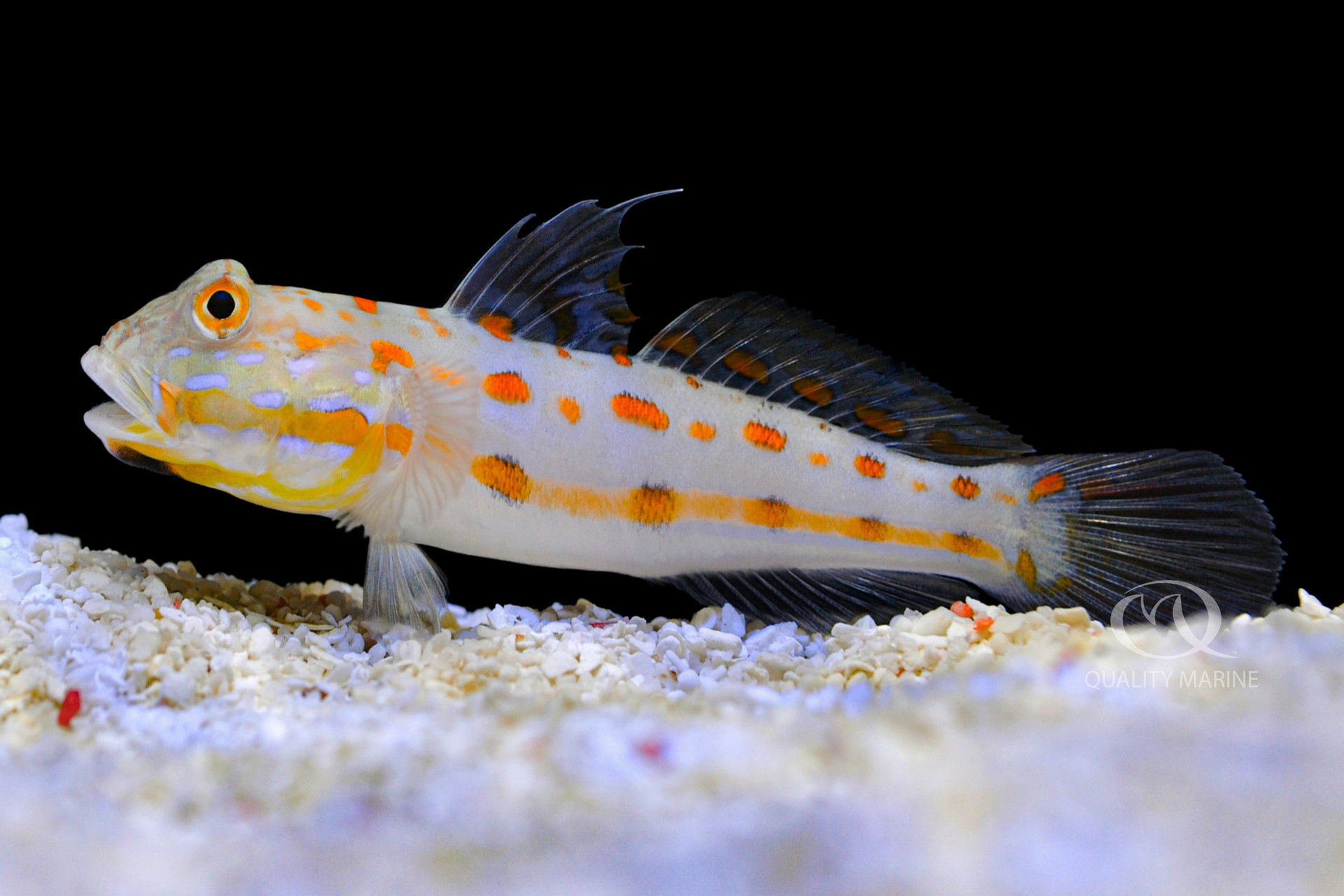
Tank Requirements:
- Requires a mature sandbed with plenty of natural microfauna.
- Tank size: 40+ gallons.
- Pairs well with: Most peaceful reef fish but can be territorial with other sand-sifters.
2. Sleeper Goby (Valenciennea spp.)
Photo Credit: Aquarium Gallery
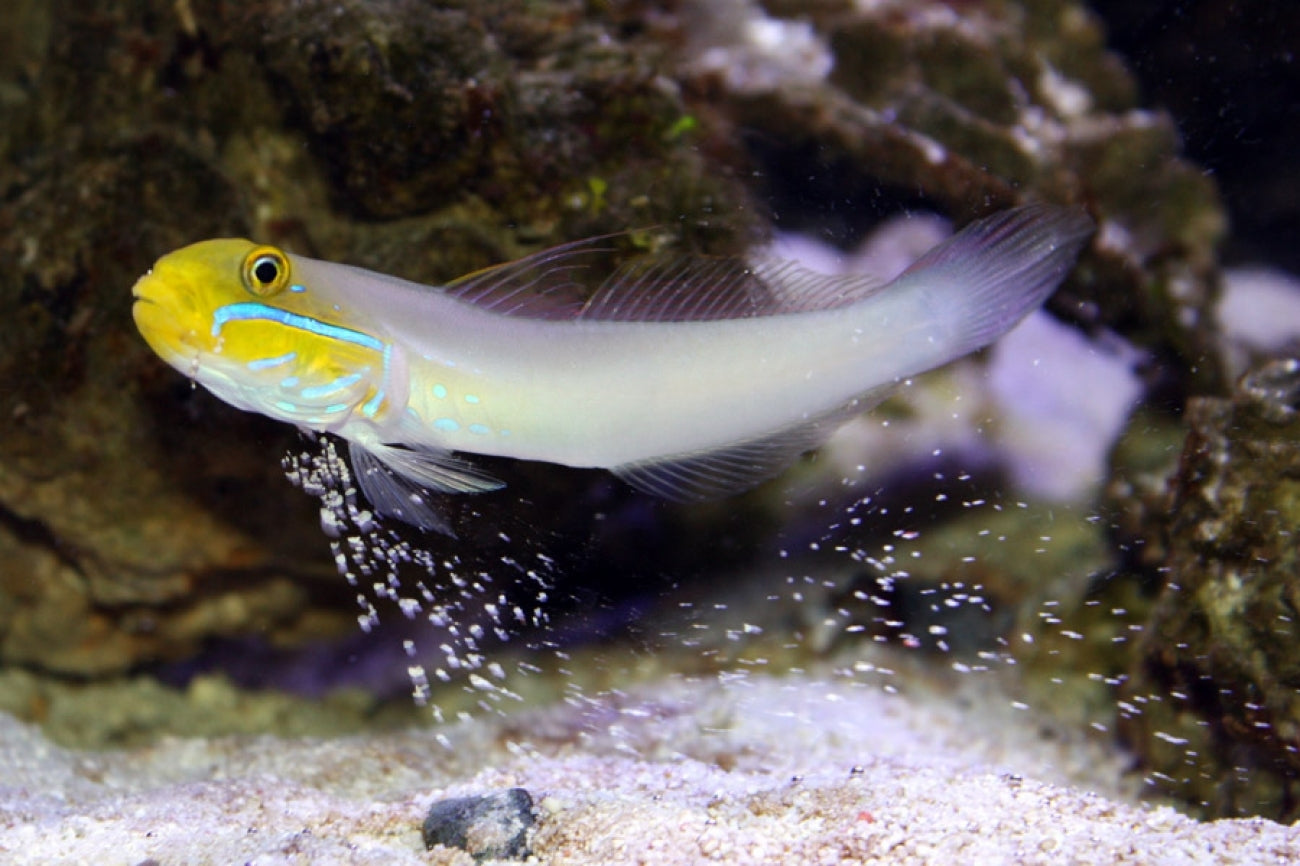
More adaptable than some other sand-sifters and easier to feed in captivity.
Tank Requirements:
- Tank size: 40+ gallons.
- Prefers fine to medium-grain sand for easier sifting.
- Pairs well with: Peaceful fish and invertebrates.
3. Orange Spot Goby (Valenciennea strigata)
Photo Credit: Blue Zoo Aquatics
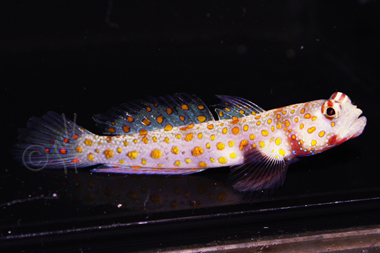
- Non-stop forager—sifts sand and picks at diatoms growing on surfaces.
- Tolerates a wider range of tank conditions compared to some other sand-sifting gobies.
- Can form a symbiotic relationship with pistol shrimp, which enhances tank biodiversity.
- Territorial with similar species—best kept singly or in a mated pair.
Tank Requirements:
- Tank size: 50+ gallons.
- Needs fine sand to sift effectively.
- Pairs well with: Most peaceful fish and pistol shrimp.
4. Court Jester Goby / Rainford Goby (Koumansetta rainfordi)
Photo Credit: The Biota Group
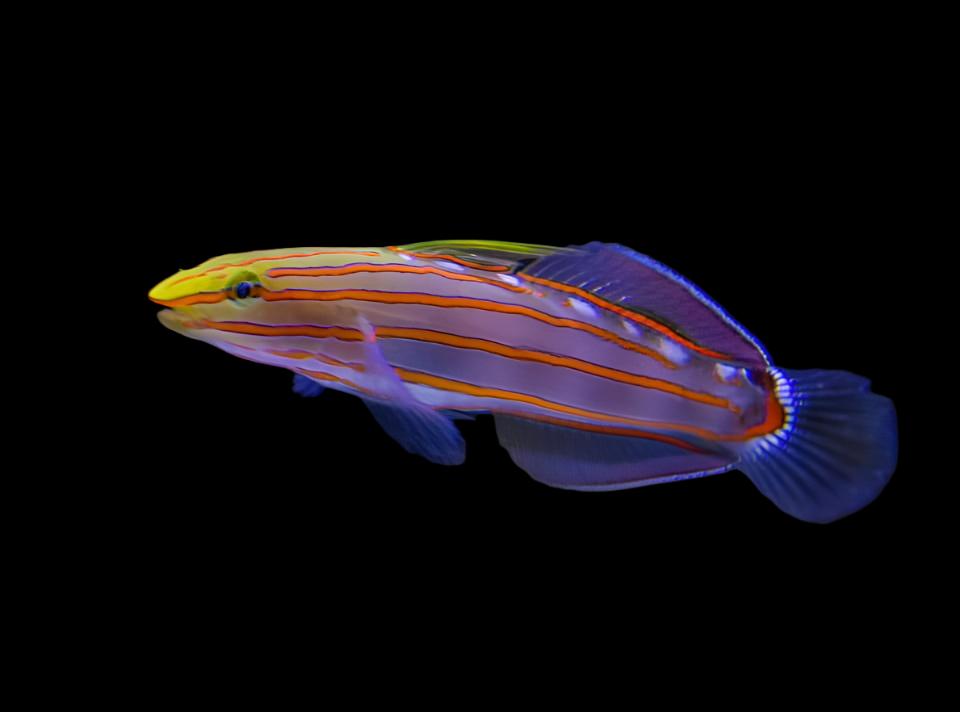
- One of the best nano-friendly diatom grazers—actively picks at film algae and diatoms on sand, glass, and rockwork.
- Unlike the larger sand-sifters, this goby focuses more on biofilm and microalgae removal rather than overturning the sand.
- Great for smaller tanks where sand-sifters might cause too much disturbance.
- Can be shy—needs a peaceful environment to thrive.
- May not eat prepared foods initially—requires a well-established tank with a natural food source.
- Often Aquacultured which can make acclimating them to eating a prepared diet
Tank Requirements:
- Tank size: 20+ gallons.
- Prefers established tanks with good microfauna populations.
- Pairs well with: Most peaceful community fish.
5. Twin Spot Goby (Signigobius biocellatus)
Photo Credit: Reef2Reef
- Sifts through sand constantly, reducing diatom buildup.
- Works well in small tanks, where large sand-sifters would be impractical.
- Striking appearance—features two distinct eye spots that help deter predators.
- Delicate and difficult to feed—needs a mature sandbed with plenty of microfauna.
- Best kept in mated pairs for long-term survival.
Tank Requirements:
- Tank size: 20+ gallons.
- Needs fine sand to sift efficiently.
- Pairs well with: Peaceful tankmates—easily bullied by aggressive fish.
6. Yellow Watchman Goby (Cryptocentrus cinctus)
Photo Credit: Reef Chasers

- Sifts through the sand, preventing diatom buildup before it becomes a problem.
- Forms a symbiotic relationship with pistol shrimp, further stirring the substrate.
- Hardy and adaptable to various tank conditions.
- Can be territorial toward other gobies but generally peaceful.
Tank Requirements:
- Tank size: 20+ gallons.
- Needs: A sandy substrate and rockwork for burrowing.
- Pairs well with: Pistol shrimp, peaceful community fish.
7. Engineer Goby (Pholidichthys leucotaenia)
Photo Credit: JJPhoto
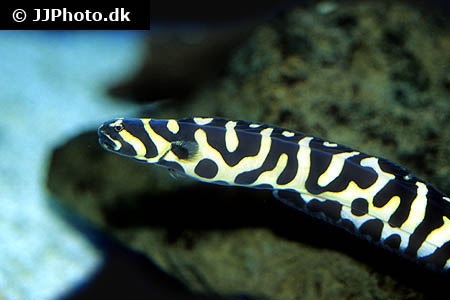
- Constantly burrows and aerates the sand, disrupting diatom settlement.
- Stronger digger than most gobies, making it ideal for deep sandbeds.
- Can be mistaken for an eel due to its elongated body.
- Excels in tanks with ample sand space but may rearrange aquascaping.
Tank Requirements:
- Tank size: 50+ gallons.
- Needs: Deep, soft sandbed for burrowing.
- Pairs well with: Larger peaceful fish, as small fish may be startled by its digging.
Fish for Cleaning Rockwork
1. Lawnmower Blenny (Salarias fasciatus)
Photo Credit: Quality marine
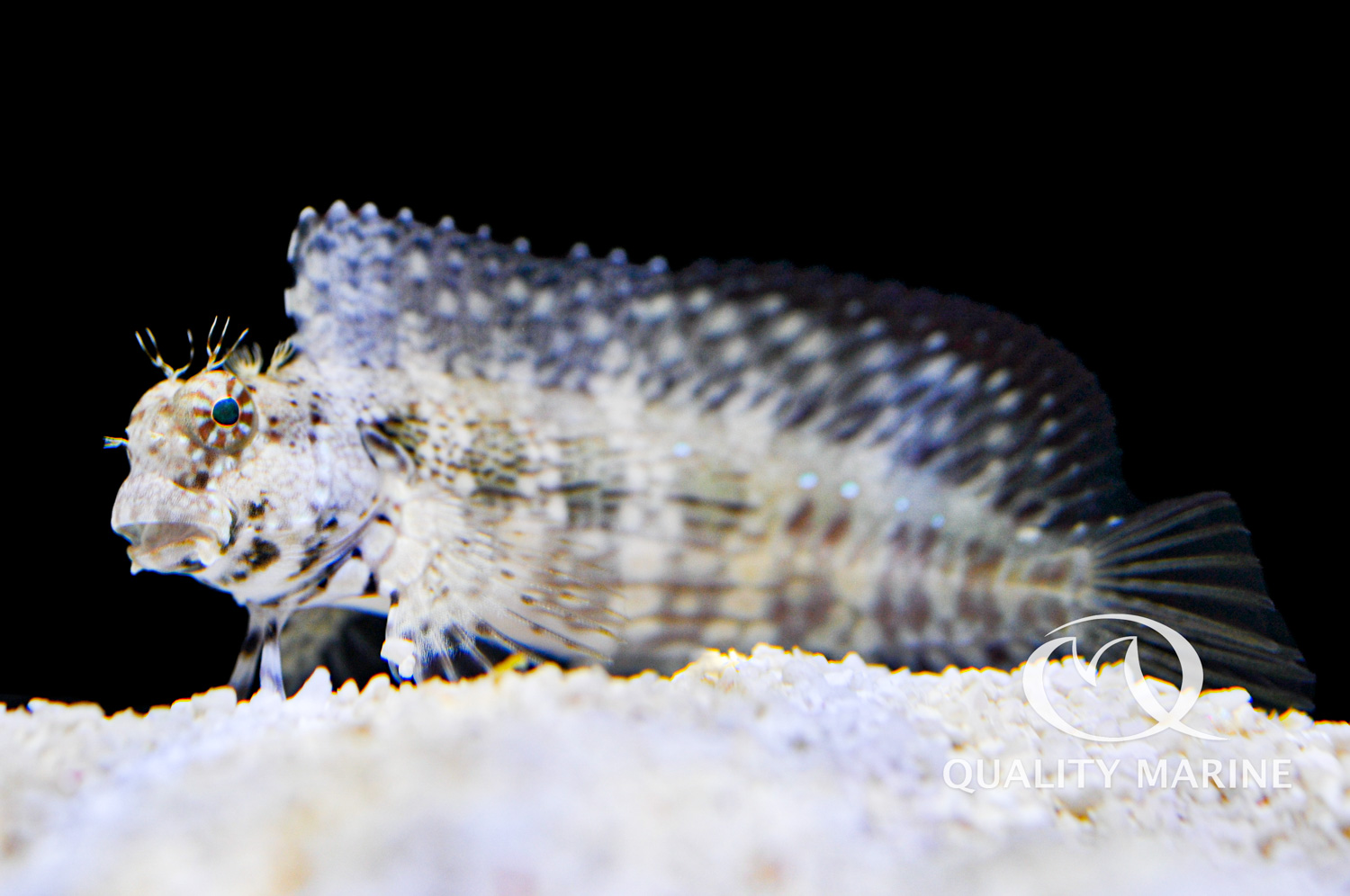
- Constant grazer that feeds on diatoms, film algae, and biofilms.
- Actively scrapes surfaces, keeping rocks and glass clean.
- Highly active—spends most of the day foraging.
- Can become aggressive toward similar-shaped fish.
Tank Requirements:
- Tank size: 30+ gallons.
- Needs: Established rockwork with algae growth.
- Pairs well with: Most peaceful fish but may become territorial toward other blennies.
2. Starry Blenny (Salarias ramosus)
Photo Credit: Seahorse Aquariums
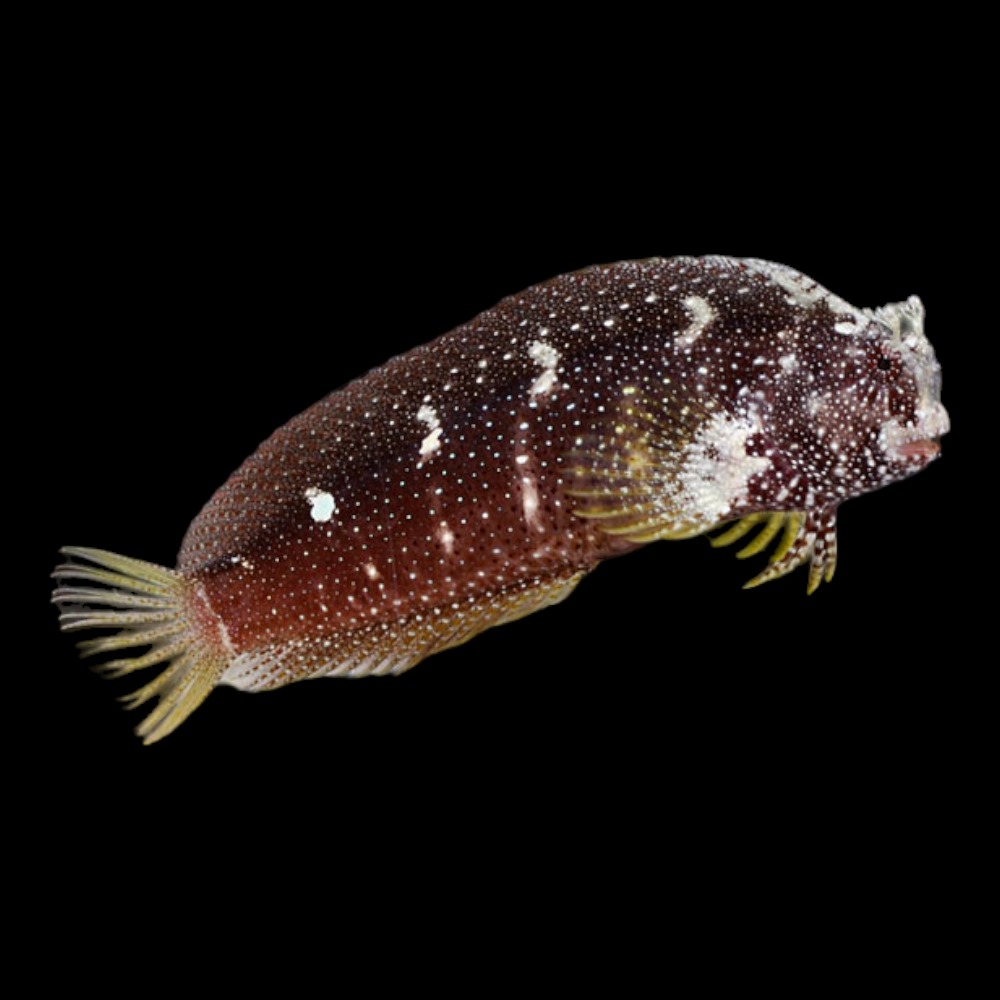
- Similar to the Lawnmower Blenny, but with a more peaceful temperament.
- Grazes on diatoms, film algae, and biofilms, keeping rock surfaces clean.
- Features a speckled pattern that allows it to camouflage in rockwork.
- Will perch on rocks and corals while surveying its environment.
Tank Requirements:
- Tank size: 30+ gallons.
- Needs: Plenty of rockwork for perching and algae grazing.
- Pairs well with: Most reef-safe fish but may fight with other blennies.
3. Hector’s Goby (Koumansetta hectori)
Photo Credit: ORA
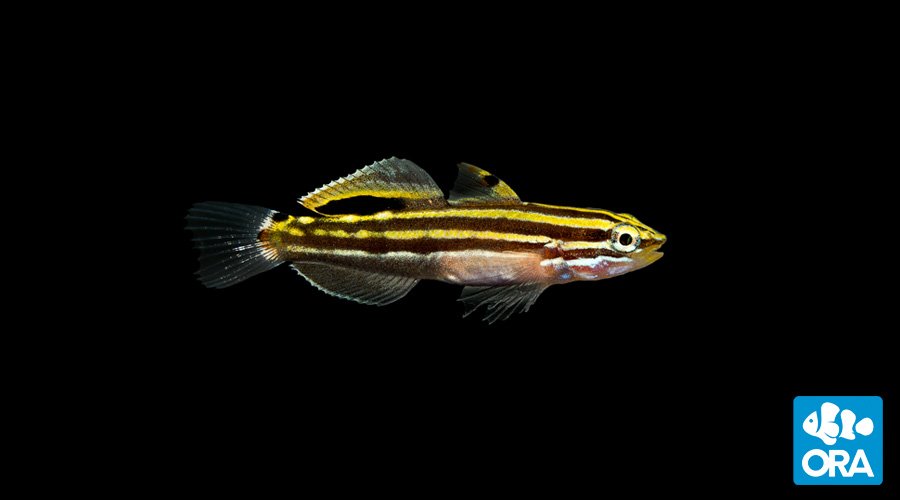
- One of the best small-tank diatom grazers, actively picking at diatoms on sand, rock, and glass.
- Less aggressive than Rainford’s Goby but has similar feeding behavior.
- Constantly forages, making it a great low-maintenance cleaner.
- Requires a mature tank with natural biofilm growth.
Tank Requirements:
- Tank size: 20+ gallons.
- Needs: A well-established system with plenty of microfauna.
- Pairs well with: Peaceful tankmates—easily outcompeted for food by aggressive eaters.
4. Kole Tang (Ctenochaetus strigosus)
Photo Credit: Fish World
- Scrapes film algae and diatoms off rockwork with specialized bristle-like teeth.
- Highly active grazer that keeps surfaces clean.
- Can be aggressive toward other tangs if tank size is too small.
- Ideal for medium to large reef tanks where space allows for continuous foraging.
Tank Requirements:
- Tank size: 75+ gallons.
- Needs: Plenty of rockwork for grazing.
- Pairs well with: Other tangs if introduced properly; best kept singly in smaller tanks.
5. Foxface Rabbitfish (Siganus spp.)
Photo Credit: Biarritz Aquarium
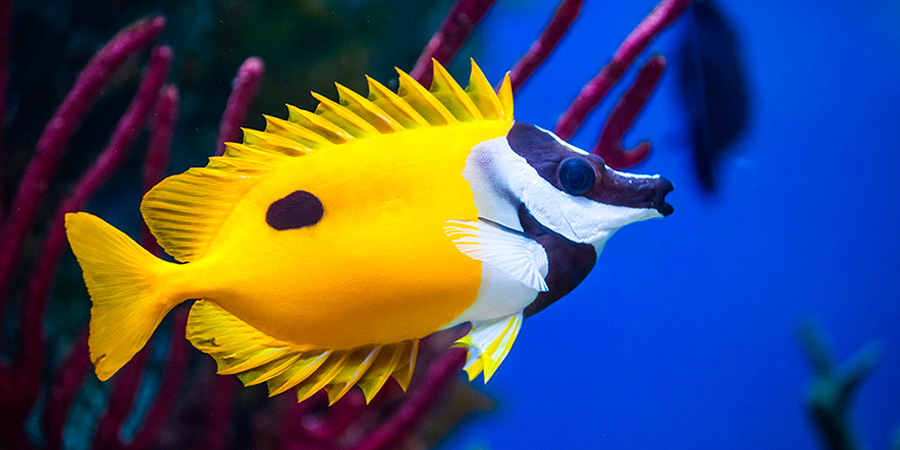
- Grazes on diatoms and film algae, particularly in large tanks.
- Less aggressive than tangs, making it a great alternative for algae control.
- Brightly colored with a distinctive, bold pattern.
- Mildly venomous spines—handle with care!
Tank Requirements:
- Tank size: 75+ gallons.
- Needs: Ample swimming space and rockwork.
- Pairs well with: Most peaceful reef fish; avoid housing with aggressive tankmates.
Troubleshooting Persistent Diatom Blooms
Diatoms are frustrating but manageable. If your tank is experiencing a persistent bloom, work through this checklist to identify and fix the root cause.
1. Check Your Water Source
Your tank is only as clean as the water you add to it.
Is your RODI filter working properly?
- Silicate breakthrough is a major culprit. If your DI resin is exhausted, silicates will make it through, feeding diatoms.
- Test your RODI water for silicates—if present, replace your DI resin or add an extra DI stage.
- Consider upgrading to a high-silicate rejection membrane if issues persist.
2. Are you using a high-quality salt mix?
- Some budget salt mixes contain silicates in trace amounts, fueling blooms.
- Research and use a reputable reef-grade salt with minimal impurities.
3. Test for Phosphates
- While diatoms primarily use silicates, phosphates can encourage their persistence.
- If phosphates are high, Granular Ferric Oxide (GFO) or algae reactors can help bring levels down.
Read More About Phosphate Reduction Here
Myths About Diatoms
1. Diatoms mean my tank is dirty.
Diatoms appear due to silicates, not poor maintenance. Even the cleanest reef tanks can experience blooms if silicates are introduced.
2. Diatoms are toxic to fish and corals.
Diatoms are harmless, though excessive coverage can smother coral tissue and block light.
3. Once diatoms appear, they never go away.
Diatoms naturally burn out once silicates are depleted. They often disappear on their own within weeks in a new tank.
4. Diatoms are a sign my tank is cycling incorrectly.
Diatom blooms are a normal part of the cycling process and usually resolve as the tank matures.
5. More frequent water changes will eliminate diatoms faster.
If your source water contains silicates, frequent water changes may actually make the problem worse. Test your RODI water first!
FAQs About Diatoms
Q: How long does a diatom bloom last?
A: In new tanks, expect them to last 2–6 weeks as the system matures. In established tanks, a bloom should clear up within a few days once silicates are removed and competition increases.
Q: Can diatoms harm my corals?
A: Not directly, but they can smother coral tissue and block light if left unchecked, which may stunt coral growth over time.
Q: Do water changes help or make diatoms worse?
A: If your RO/DI water contains silicates, frequent water changes will fuel diatom growth instead of eliminating it. Always test your source water first before assuming water changes will help.
Q: Why did I get diatoms after upgrading my lights?
A: Increased light intensity can temporarily trigger blooms as diatoms and other algae adjust to the new conditions. This is typically a short-term response.
Q: Can I scrub diatoms off my rocks and glass?
A: Yes, diatoms are easily wiped off surfaces, but if the root cause (silicates) isn’t addressed, they will return.
Q: Will a clean-up crew eat diatoms?
A: Yes! Trochus snails, cerith snails, and nerite snails are some of the best natural diatom grazers. Sand-sifting sea cucumbers and conchs can also help on the substrate.
Q: Do diatoms release toxins?
A: Most aquarium diatoms are harmless, but some species (like those in red tides) can produce toxins in the wild. The ones in your tank won’t poison fish or corals.
Q: Do diatoms mean my tank isn’t cycled?
A: Not necessarily. Diatoms appear in both new and mature tanks when silicates are available. A diatom bloom alone is not a sign of an incomplete cycle.
Q: Why do diatoms come back after I thought they were gone?
A: If you recently added new sand, rocks, or even changed your salt mix, silicates may have been introduced again, fueling a second wave.
Q: Can carbon dosing help remove diatoms?
A: Not really. Carbon dosing (like vinegar or vodka) promotes bacterial growth, but diatoms primarily rely on silicates, not excess nitrates or phosphates.
Q: My sand bed is covered in diatoms. Should I stir it?
A: Be careful—stirring too much can release trapped nutrients and cause more problems. Instead, add sand-sifting snails or sea cucumbers to naturally keep the sand clean.
Q: Will diatoms go away if I black out my tank?
A: No, diatoms can survive in low-light conditions, unlike other algae. Address the silicate source for long-term control instead of using a blackout period.
Conclusion: Should You Worry About Diatoms?
Diatoms are one of the most common issues in reef tanks, but they are rarely a long-term problem. Most blooms disappear naturally once silicates deplete, and minor adjustments in water quality can speed up the process.
If diatoms persist, focus on silicate removal, nutrient control, and strong water flow. With time and proper maintenance, your tank will transition past this phase, leaving you with a cleaner, healthier reef.
Happy Reefing!
References
-
"How to Get Rid of Brown Algae (Diatoms) in the Fish Tank." Buce Plant, 2024, www.buceplant.com.
-
Sprung, Julian. Algae: A Problem Solver Guide. Two Little Fishies, 2002.
-
Fatherree, James. The Modern Reef Aquarium. Microcosm Ltd., 2019.
- "How to Eliminate and Prevent Diatoms in a Reef Tank." ReefBum, 2024, www.reefbum.com. Accessed 2024.

